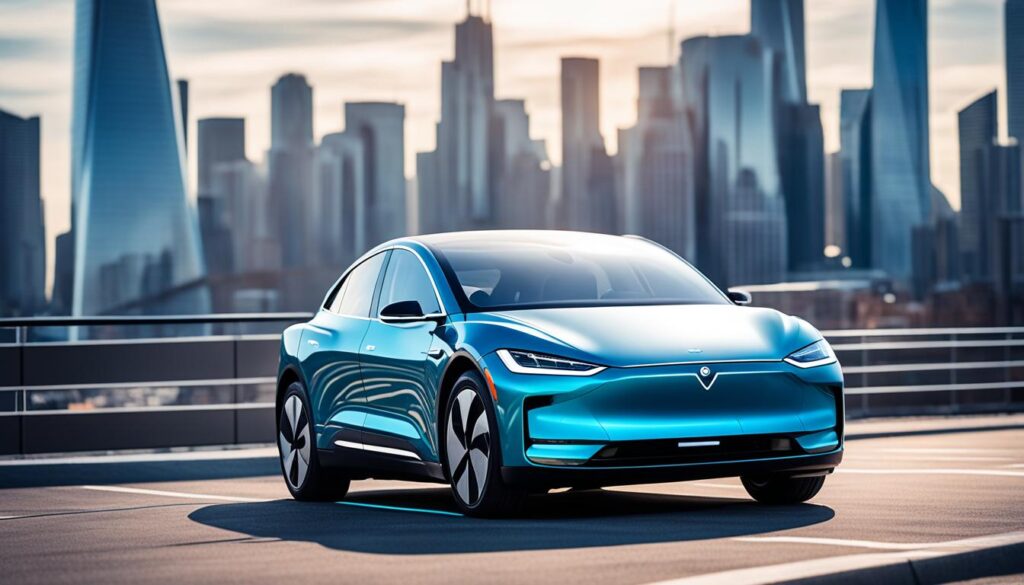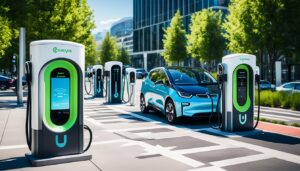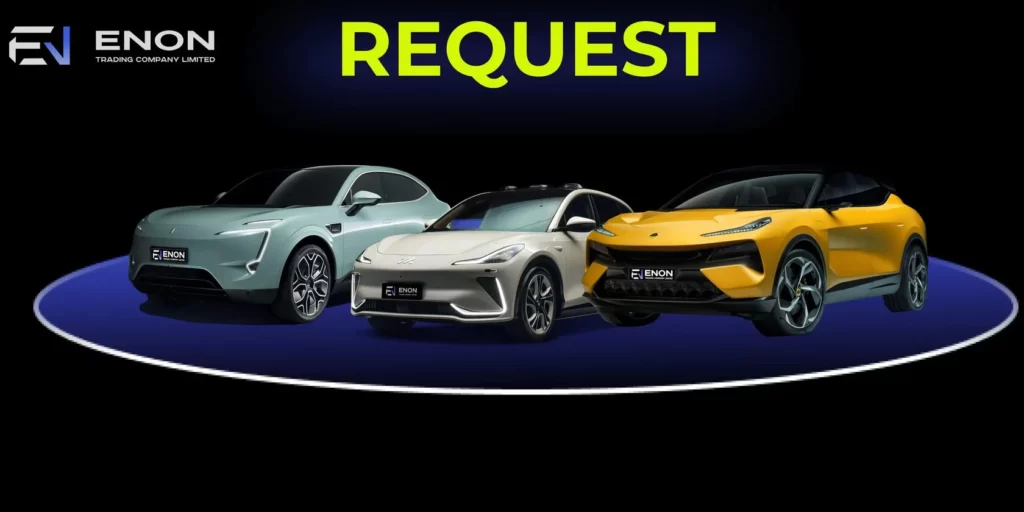As the world grapples with the urgent need to address climate change, sustainable transportation has become a key focus. The adoption of electric vehicles offers a promising solution to reduce our carbon footprint and mitigate the environmental impact of transportation.
Unlike traditional combustion engine vehicles, EVs run on electricity, which can be sourced from clean and renewable energy. By shifting from conventional cars to EVs, we can drastically reduce the emission of greenhouse gases, such as carbon dioxide (CO2), that contribute to climate change.
But the benefits of EVs go beyond just emissions reduction. They also offer the potential to transform our transportation systems, making them more efficient, eco-friendly, and sustainable. However, to fully embrace this transition, we need to invest in robust EV charging infrastructure that supports the widespread adoption of electric vehicles.
Are you interested in learning more about how EVs can revolutionize our transportation systems and pave the way for a greener future? In this article, we will explore the role of EV charging infrastructure, the benefits of electric vehicles, and the advancements in clean energy transportation that are fueling this transformation. Let’s dive in!
Key Takeaways:
- Electric vehicles (EVs) offer a more environmentally friendly transportation option by reducing carbon emissions.
- The adoption of EVs requires a robust and efficient EV charging infrastructure.
- Investing in clean energy transportation can contribute to a greener future.
- The benefits of EVs extend beyond emissions reduction, with potential for increased efficiency and sustainability.
- Advancements in clean energy technology are driving the transition to electric vehicles.
The Role of Solar-powered Charging Stations
Solar-powered charging stations play a crucial role in the advancement of renewable energy and sustainable transportation. By harnessing solar energy, these stations provide a clean and eco-friendly solution for EV charging, reducing the reliance on non-renewable energy sources. With the latest technological advancements, solar-powered charging stations have become more efficient, offering improved energy storage, faster charging times, and increased capacity.
The integration of solar-powered charging stations with other sustainable technologies, such as the Internet of Things (IoT), further enhances their value proposition. By connecting and coordinating with IoT-enabled devices, these charging stations can optimize energy consumption, monitor performance, and provide real-time analytics. This integration not only improves the efficiency and effectiveness of charging operations but also contributes to a more comprehensive energy management system.
“Solar-powered charging stations offer a sustainable and energy-efficient solution for EV owners.”
In addition to their sustainable energy sourcing, solar-powered charging stations also contribute to reducing overall carbon emissions. By utilizing renewable energy from the sun, these stations help decrease dependency on fossil fuels and mitigate the environmental impact of transportation. As the demand for clean and sustainable transportation solutions grows, solar-powered charging stations play a crucial role in establishing a greener and more sustainable future.
Advantages of Solar-powered Charging Stations:
- Utilization of renewable energy sources, reducing dependence on non-renewable fuels
- Lower carbon emissions and environmental impact
- Improved efficiency, with reduced charging times and increased energy storage capacities
- Integration with IoT technology for enhanced energy management and performance optimization

As the world transitions towards sustainable energy and transportation systems, solar-powered charging stations serve as an essential component of the evolving EV charging infrastructure. By embracing solar energy and investing in renewable solutions, we can establish a more sustainable, clean, and environmentally responsible future.
Wireless Power Transfer (WPT) for Convenient Charging
Wireless Power Transfer (WPT) offers a convenient and user-friendly solution for EV charging. Unlike traditional charging techniques that require physical connections, WPT uses electromagnetic induction to transfer energy wirelessly between the charging station and the vehicle. This eliminates the need for cables and plugs, making the charging process more straightforward and flexible.
With WPT, EV owners can enjoy the convenience of charging without the hassle of handling cords. This technology opens up possibilities for charging infrastructure in various locations, including parking spots in malls, offices, and specialized lanes on highways.
By integrating WPT into the EV charging ecosystem, charging becomes a more passive and seamless activity, enhancing the overall EV ownership experience. EV owners will no longer need to worry about finding compatible charging cables or dealing with the inconvenience of tangled cords.
Furthermore, WPT systems can be combined with other sustainable technologies, such as solar arrays, to maximize the use of renewable energy sources for EV charging. By harnessing the power of wireless connectivity and renewable energy, WPT provides a significant step towards a more sustainable and convenient future of EV charging.

The Benefits of Wireless Power Transfer (WPT)
- Convenience: WPT eliminates the need for physical connections, allowing for effortless and user-friendly charging.
- User-friendly charging: EV owners can simply park their vehicles in designated areas without the hassle of manually plugging in cables.
- Flexible charging locations: WPT enables charging infrastructure to be installed in various locations, providing more convenience and accessibility for EV owners.
- Eco-friendly: By maximizing the use of renewable energy sources, such as solar arrays, WPT contributes to a greener and more sustainable charging ecosystem.
Incorporating wireless power transfer technology into EV charging infrastructure brings us one step closer to a future where charging is effortless, convenient, and environmentally friendly.
Advantages of Automated Charging Mechanisms and PV Module Monitoring
Automated charging mechanisms play a vital role in optimizing the charging process for electric vehicles (EVs). By eliminating the need for manual adjustments, these mechanisms adapt to the specific charging requirements of each EV in real-time. This dynamic charging capability not only enhances the efficiency of the charging process but also ensures battery longevity and vehicle readiness.
With automated charging mechanisms, EV owners can enjoy the convenience of a tailored charging experience without the hassle of manual intervention. These mechanisms continuously monitor the charging status, adjusting parameters such as charging rate and voltage to deliver optimal energy to the EV battery. As a result, EVs can charge more quickly and efficiently, utilizing the available power capacity while minimizing the risk of overcharging or undercharging.
Reliability is a fundamental factor in the adoption of EV charging technologies. To ensure reliable and consistent energy output in solar-powered charging stations, diligent monitoring of PV modules is crucial. PV modules are responsible for converting sunlight into usable electricity, making their efficient operation essential for effective EV charging. Continuous monitoring systems track performance metrics in real-time, allowing for immediate detection of potential issues and proactive maintenance to prevent system downtime.
By monitoring performance, PV module monitoring systems optimize energy production, ensuring that the charging stations generate the maximum amount of electricity from available sunlight. This enhanced performance not only improves the overall efficiency of the charging infrastructure but also enhances the reliability of the energy supply for EV charging.
“Automated charging mechanisms and PV module monitoring are key enablers for reliable and efficient EV charging, offering optimized charging experiences for EV owners and promoting the long-term sustainability of clean energy transportation.”
The advantages of automated charging mechanisms and PV module monitoring can be summarized as follows:
- Optimized charging for EVs, ensuring battery longevity and vehicle readiness
- Real-time adaptation to specific charging requirements, enhancing the efficiency of the charging process
- Diligent monitoring of PV modules, ensuring reliable and consistent energy output
- Proactive maintenance and issue detection for uninterrupted operation
- Performance optimization, maximizing energy production from available sunlight
Establishing trust and confidence in EV charging technologies is crucial for widespread adoption. By leveraging automated charging mechanisms and implementing robust PV module monitoring, EV charging infrastructure can ensure a reliable and efficient charging experience for EV owners, contributing to the long-term success of clean energy transportation.
Enhancing User Experience with IoT Integration and Charging Slot Monitoring
The integration of the Internet of Things (IoT) into EV charging stations enhances the user experience by providing real-time feedback and interactive features. IoT sensors and communication modules enable users to access charging status, reserve slots, and schedule charging sessions through smartphone applications. This level of connectivity and control fosters predictability and convenience, leading to increased user satisfaction and adoption of EV charging technologies.
Through IoT integration, EV owners and operators can enjoy the following benefits:
- Real-time feedback: Users gain access to up-to-date information on charging station availability, charging progress, and estimated completion times. This real-time feedback enables users to plan their charging activities more efficiently and eliminates uncertainty.
- Interactive features: Smartphone applications connected to charging stations allow users to interact with the charging process, such as adjusting charging parameters and receiving notifications when the charging session is complete. This level of interactivity enhances the overall user experience.
- Predictive maintenance: IoT sensors can monitor charging station components, such as power supply, connectors, and cables, to detect potential issues before they escalate. By providing proactive alerts and notifications, operators can ensure efficient operations and reduce downtime.
Furthermore, charging slot monitoring systems play a crucial role in enhancing the user experience. These systems provide real-time updates on station availability, reducing uncertainty and wait times for EV owners. Users can plan their charging stops and avoid crowded or unavailable stations, promoting a seamless charging experience.
Incorporating IoT Integration and Charging Slot Monitoring Benefits
The integration of IoT technology into EV charging stations revolutionizes the user experience. Real-time feedback, interactive features, and predictive maintenance mechanisms empower EV owners with control and convenience, leading to increased satisfaction and adoption of clean energy transportation.
Furthermore, charging slot monitoring systems alleviate the frustrations of uncertainty and waiting times. By providing real-time updates on station availability, EV owners can easily plan their charging activities and maximize convenience.
| Benefits of IoT Integration and Charging Slot Monitoring | Enhanced User Experience |
|---|---|
| Real-time feedback | Empowers users with up-to-date charging information |
| Interactive features | Enables users to adjust charging parameters and receive notifications |
| Predictive maintenance | Reduces downtime and ensures efficient operations |
| Charging slot monitoring | Provides real-time updates on station availability |
The integration of IoT and charging slot monitoring systems contributes to the overall success of clean energy transportation by enhancing the user experience and promoting the adoption of EV charging technologies.
Conclusion
Embracing electric vehicles (EVs) and investing in clean energy transportation is a crucial step towards reducing our carbon footprint and promoting a greener future. The dominance of electric vehicles signifies our collective acknowledgment of the need for sustainable practices and the transition to renewable energy sources. EVs offer a more environmentally friendly transportation option, contributing to cleaner air quality and reduced greenhouse gas emissions.
Solar-powered charging stations play a vital role in providing a sustainable and efficient solution for EV charging. By sourcing energy directly from the environment, these stations minimize reliance on non-renewable resources and decrease the carbon footprint associated with charging vehicles. With advancements in solar energy storage and transfer technology, solar-powered charging stations have become even more practical and energy-efficient.
Wireless Power Transfer (WPT) technology further enhances the convenience and user-friendliness of EV charging. By eliminating the need for physical connections, WPT provides a seamless and flexible charging experience. This opens up opportunities for charging infrastructure in various locations, making it easier for EV owners to charge their vehicles conveniently.
To ensure optimized charging and reliable energy output, automated charging mechanisms and PV module monitoring are essential. Automated charging mechanisms adapt to the vehicle’s charging requirements in real-time, promoting battery longevity and vehicle readiness. Meanwhile, PV module monitoring tracks performance metrics and enables proactive maintenance, enhancing the reliability and efficiency of solar-powered charging stations.
By integrating the Internet of Things (IoT) into EV charging stations, we can elevate the user experience to new heights. IoT integration allows users to access real-time feedback, reserve charging slots, and schedule sessions through smartphone applications. This level of connectivity and control fosters predictability and convenience, maximizing user satisfaction and ensuring efficient utilization of charging resources. Furthermore, charging slot monitoring provides real-time updates on station availability, reducing uncertainty and wait times for EV owners.
Investing in EV charging infrastructure and clean energy transportation is not only beneficial to our environment but also paves the way for a cleaner and more sustainable future. As we continue to reduce our reliance on fossil fuels and embrace renewable energy sources, we can collectively work towards a greener tomorrow.
FAQ
What is the environmental impact of electric vehicles?
Electric vehicles (EVs) offer a more environmentally friendly transportation option compared to traditional combustion engine vehicles. EVs reduce carbon emissions, leading to a significant reduction in the carbon footprint and air pollution.
How do electric vehicles contribute to sustainable transportation?
Electric vehicles rely on clean energy sources, such as electricity, reducing the dependence on non-renewable fuels. By transitioning to EVs, we promote sustainable transportation practices and work towards a greener future.
What is the role of EV charging infrastructure?
EV charging infrastructure is essential for the widespread adoption of electric vehicles. It provides convenient and accessible charging solutions for EV owners, allowing them to charge their vehicles while on the go.
How do solar-powered charging stations work?
Solar-powered charging stations harness solar energy to charge electric vehicles. They source energy directly from the environment, reducing the reliance on non-renewable energy sources and offering a sustainable and efficient charging solution.
What are the advantages of wireless power transfer for EV charging?
Wireless power transfer (WPT) eliminates the need for physical connections, making the charging process more straightforward and flexible. WPT allows for charging infrastructure in various locations, increasing convenience for EV owners.
How do automated charging mechanisms and PV module monitoring enhance EV charging?
Automated charging mechanisms optimize EV charging by adapting to the vehicle’s charging requirements in real-time. PV module monitoring ensures reliable energy output and proactive maintenance, enhancing the efficiency and performance of solar-powered charging stations.
How does IoT integration enhance the user experience with EV charging?
IoT integration provides real-time feedback and interactive features for EV owners. Users can access charging status, reserve slots, and schedule charging sessions through smartphone applications, enhancing convenience and predictability.
What is the significance of charging slot monitoring?
Charging slot monitoring provides real-time updates on station availability, reducing uncertainty and wait times for EV owners. It ensures a seamless and efficient charging experience, contributing to the success of clean energy transportation.
How can investing in electric vehicles and clean energy transportation reduce the carbon footprint?
Embracing electric vehicles and investing in clean energy transportation significantly contribute to reducing the carbon footprint. By transitioning to EVs and utilizing renewable energy sources, we can promote a greener future and reduce our environmental impact.























